If you have been paddling long enough you will have your own “sea stories”. I certainly have quite a few. I will share with you briefly three of my stories and please read Karen and Rob Mirlenbrink’ recent post sharing one of their stories from last year. (Now in the Safety Section of this site). As we approach the training and racing season it is always a good idea to review your safety habits(good or bad) and hopefully improve upon the bad ones.
1. One Minute of Terror on the Charles River, Boston, Massachusetts, Wesley Echols
Beginning in the spring on Wednesday’s there is a training race on the Charles River that last almost 5 miles. This is a flat water course that draws all comers in K1’s, skis, sea kayaks, etc. We use it as a gut busting heartrate explosion to see how good of shape we are compared to your buddies. So a few years ago with dark approaching, I put my Mohican on my car and took off my PFD that I wear 99% of the time, on the the stern of the boat so other cars would see it. I then jumped in Cory Lancaster’s K1(stability level 2) to give it a try. It had no air bags. After paddling it for several minutes and approaching the take out, I capsized. No problem you maybe thinking knowing the Charles River is not very wide and seldom is over 6 ft deep.
Because it was dusk, when I capsized I could not see the surface of the water and it caught me by susprised. Normally you have a few seconds in daylight to take a deep breath before submerging. I engulfed some water and immediately had the typical panic response of not being able to breath. This coupled with trying desparately trying to keep my head above water since I had no PFD on and my boat was quickly sinking as well. So for about 45 seconds I can vividly remember thinking I am going to drown right here and now, only 10 yards from shore. How screwed up it that? The hard fact is the most people drown within 2 minutes.
With one hand holding the paddle and the boat, I managed to swim about 3 yards to where I could stand up. This is a perfect example of how the three circumstances came together in a matter of seconds that almost got the best of me; no pfd, no airbags, darkness. The irony of this story is that as much ocean time as I get, I almost drowned 10 yards from shore on the Charles River of all places. So now I always wear my PFD, no matter how hot, or how long I am on the water, or how flat the conditions are.
2. 60 minutes of Death Grip Paddling, Ocean Drive, Newport, Rhode Island
On seven occasions over the past 10 years, I have either solo or with a paddling partner paddled the 37 miles around Aquidneck Island either in a sea kayaks earlier on, or later in surfskis. My fastest time was 6 hours and slowest time was 8 hours. This routes encompasses parts of all the local races most us know here in New England; Sakonnet River, Ocean Drive, Narragansett Bay, Mount Hope Bay. This last time I did this was with my long time paddling partner Tim Dywer. I had just bought the previous day my first of three Think Evo’s. I still had my S1R that I loaned to Tim. Looking at the forecast we knew it was going to be rough around Ocean Drive but in typically Tim fashion, he had only this weekend to get this trip in so he was pushing hard to “do it”. How rough could it be? Both of us experienced, well trained, paddlers in stable skis. I wanted to put it off to another weekend having looked at the forecast. Tim thought the wind probably would not be as strong as predicted. Against my better judgement we began on McCorrie Beach, just 1 minute from my house. After rounding Sachuest Point, the conditions were rough but we felt fine in our Stable skis. After the three mile ocean crossing to Ochre Point and the beginning of Ocean Drive, the wind had increased to around 25-30 mph in our face with the tide flowing in the opposite direction. Ocean Drive can be the roughest place to paddled due to the many reefs, beaches, and currents. This day was the roughest/scariest conditions I had ever paddled in.
While I tend to let Tim know how anxious I am verbally, Tim rarely shows much emotion on the water. So we paddled this section side by side with limited communication except to tell each other to head for the red can. I can remember telling myself over and over again, DO NOT become separate from Tim. So I was glued to him in my new Evo. I can also remember thinking if I come off my ski, will I be able to remount it in these conditions, so don’t come off!! We rounded the red can well off shore to avoid the breakers and paddled another mile past the Inn at Castle Hill Lighthouse to the moderate waters of Narragansett Bay. We pulled side by side to calm ourselves after a harrowing 60 minutes of paddling. My left arm was throbbing from holding the sustained death grip for this period of time. We regrouped quickly, and continued to paddled another 20 miles completing our 37 mile journey.
The lesson here is not to be persuaded by your paddling buddy/buddies if you know in your gut that the conditions maybe overwhelming. You are ultimately responsible for your own safety. While you may feel more confident paddling in pairs or groups, in big conditions everyone becomes separated and it is very difficult for even the most skilled paddler to help another capsized paddler other than calling for help. As I learned years ago from my ACA/BCU kayak training: if your safety equipment is not on your person, then you don’t have it. So buy a PFD than can hold your phone, vhf, personal location beacon, and more.
While Tim and I have the same paddling skills and have been paddling together for 8 or 9 years and know each other well, the key difference is that Tim has a higher risk tolerance than I do. While we succeeded in our trip I now recognize this and take this into account. If either of us feel too uncomfortable now, we will opt for the safest course of action. The other lesson is not to paddled a ski,no matter how stable, until you get used to it in rough conditions. With a few more hours in the bucket of the Evo, I would have been more confident in these conditions knowing how it was going to react in these conditions.
3. Equipment Failure; ONNo!!!!, DNF, Beavertail, Jamestown, Rhode Island
While racing the Double Beav race course several years ago in my S1X Special, I was on the most tiring leg of the course; the leg from the Beavertail green can to the House on the rocks. This was at mile 9 of the 13 mile course. I remember it being rough and I was struggling to maintain my speed since I was exhausted from the race pace and the conditions. Once again I was telling myself, just keep paddling and do not come out of you ski, knowing it would be difficult to remount due to my exhaustion. I can remember however, at mile 6, that I my paddle felt a little weird and I was having more difficulty than the conditions would have normally predicted. I continued on, getting passed by some lesser fit paddlers. About a mile from the Mackeral Cove entrance and about 4 miles from the finish of the race, it became clear what was going on. My right paddle blade was twisting in the shaft on every stroke from mile 6 to mile 9. In the roughest part of the course it was finally about to become separated from the shaft. So I continued to paddle with just the left blade for 2 miles beaching at Mackeral Cove. No wonder I was getting passed, I was getting no purchase on the right blade which was increasing my unstability and adding to my overall fatigue.
I called Betsy to come get me. At the party afterwards, it was only fitting I won the paddle that was raffled away since mine came apart. The joke of the party was”Oh no” you were lucky you were that close to shore and by the way the paddle I was using was an ONNO!
The lesson here is to check your equipment before each time you get on the water. That includes the rudder, rudder yoke, rudder lines, footplate, paddle, leashes, phone, vhf, pfd, etc. Even the best equipment can fail. If I would have checked my blade before I got on the water, I would have probably seen it was loose and could avoided the DNF and possible a much different outcome.
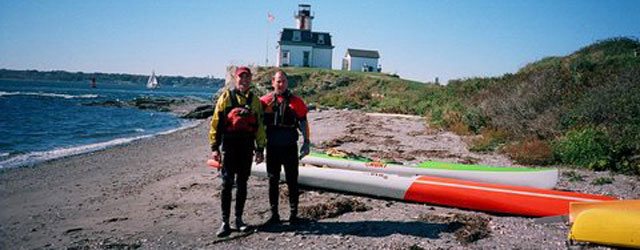

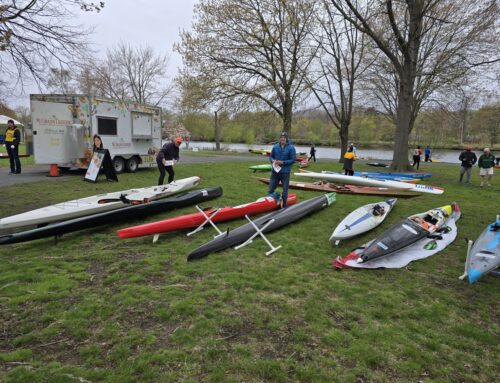
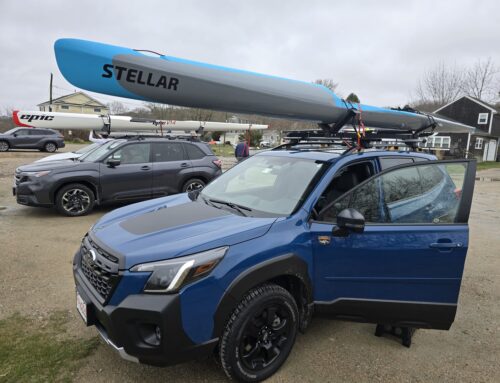
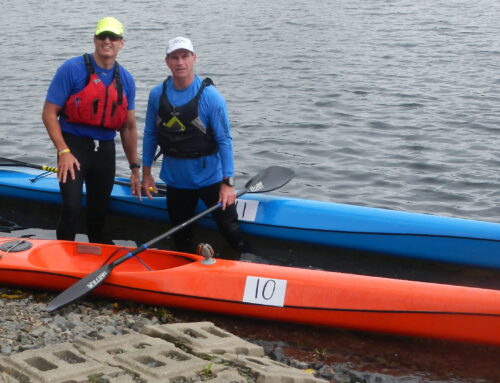
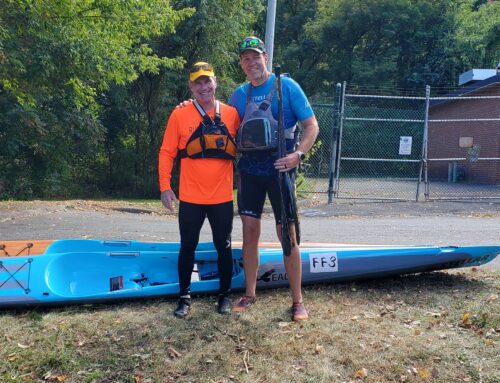
Leave A Comment
You must be logged in to post a comment.